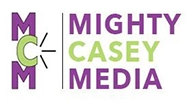You’ve heard me before on the subject of shared decision making (SDM). Short version: I’m an advocate for partnership in medical care. Partnership that includes the values, outcome goals, and cost considerations of THE. PATIENT. Which means shared decision making.
My buddies over at Software Advice have just published the results of a survey* they did in collaboration with the Mayo Clinic’s Knowledge and Evaluation Research (KER) Unit that took a deep dive into what’s happening in the real world with SDM, and what patients who are exposed to the process think of it.
The key findings:
- A majority of patients (68 percent) say they would prefer to make collaborative decisions about treatment options with their healthcare provider.
- Forty percent of patients say they have participated in SDM before, and 21 percent have done so within the past year.
- Most patients surveyed say that SDM improves their satisfaction (89 percent) and makes them feel more involved in the care they receive (87 percent).
- Nearly half (41 percent) of patients report that they would be “much more likely” to adhere to a treatment plan developed using SDM.
- 47 percent of patients would be “extremely” or “very likely” to switch to a provider whose practice offers SDM.
If you click through to the full article in the 2nd graf, you’ll see a number of graphs and charts reporting on patients’ responses to questions about provider choice and treatment protocol adherence – one of my least favorite words, but it’s a favorite of pharma and healthcare system peeps, so there it is. The pie chart that stood out for me was this one:
Likelihood to Switch to SDM Provider
For the math-challenged, 80% of the patients surveyed were moderately, very, or extremely likely to switch to a healthcare provider who practices SDM. Physicians and other clinicians who interact with patients at the point of care need to digest this: fully informing patients of the treatment options available to them, and working with patients to craft a treatment plan TOGETHER, is a survival strategy for the clinician. Ignore SDM principles at the peril of your continued professional relevance.
This is particularly timely given my upcoming attendance at the Lown Institute’s Road to RightCare: Engage, Organize, Transform conference in San Diego March 8 through March 11. I’ll be hearing from researchers, clinical teams, patient voices, and policy wonks on how to create a right-care healthcare system whose bedrock is shared decision making.
Also, the recent JAMA Oncology articles on the myth of the demanding patient, which myth has formed some of the institutional-side (translation: dinosaur providers) pushback against the wide adoption of patient input on their treatment (in other words: SDM) in the U.S. and elsewhere, are starting to knock down the walls that have kept SDM from becoming the standard medical practice model it should be.
“Nothing about me, without me” is a rallying cry of the participatory medicine movement. Shared decision making is, I believe, part of an overall civil rights issue, since patients who aren’t asked their goals and preferences for treatment are being given care that isn’t their choice. A real hurdle for SDM is going to be the inevitable end-of-life conversation – life is, after all, 100% fatal – that we all have to have, unless we die suddenly in a plane crash or car wreck.
Where are you on the SDM spectrum? Does your doctor talk you through all your options, or just write you a prescription or send you for a scan? “Shut up and do as I say” medicine needs to be consigned to the scrapheap of history. Agree? Disagree? Share your thoughts in the comments.
*Source: Practice Management systems consultancy Software Advice




